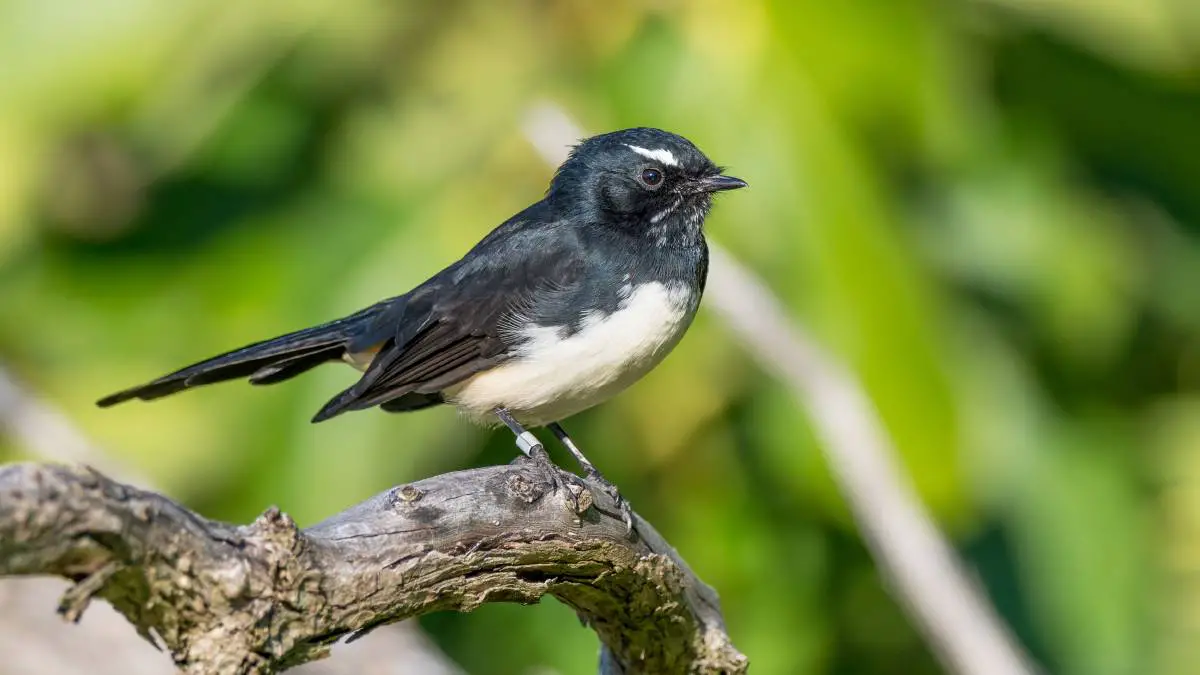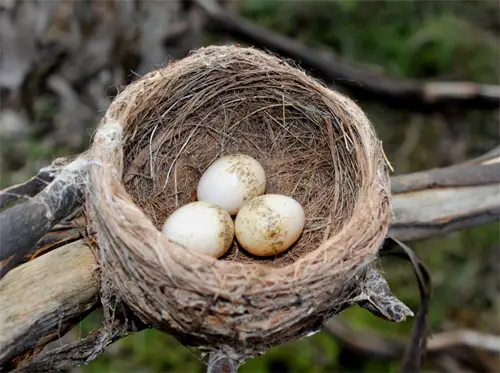The Willie Wagtail is the largest of the fantail species in Australia. Extremely successful as a species, the population is thriving and listed as “Least Concern” as its conservation status.
The Willie Wagtails plumage is a contrasting design with black upperparts and white underbelly, with both the male and female varieties having a similar design.
Willy Wag Tail vs Willie Wagtail?
The Willie Wagtail is often spelled incorrectly as “Willy Wag Tail”. The correct spelling is Willie Wagtail or its binomial name of “Rhipidura Leucophrys”. Due to the common interchangeability of the names however you will see this misspelling used often in informal or news publications.
Where can Willie Wagtails be found?
The Willie Wagtail is found across mainland Australia, except for a small section of Western Australia’s north-west. They are also not present at all currently on Tasmania.
The Willie Wagtail prefers open space environments, from woodlands, plains, wetlands and metropolitan areas. They have very little if any presence in dense forests such as plantation forests or rainforests due to the reduced ability to sight their food (insects) and increased chances of predation.
Generally solitary or in mating pairs, you will sometimes see the Willy Wagtail in flocks during winter months.
Willie Wagtails Diet
Willie Wagtails are insectivorous living off a diet of insects found from foraging on the ground. Their name comes from this foraging activity where they can be seen walking with their tail wagging side to side.
It’s common for the Willie Wagtail to form symbiotic relationships with farm animals, especially cattle where they can be seen perched on their backs. Cattle and their dung will often attract insects which the Wagtails will then be able to eat, which in turn reduces the amount of insects and pests which can cause distress to cattle.

How do Willie Wagtails live?
Willie Wagtails are nesting birds, weaving tightly woven grass nests which they rest on horizontal branches in treetops. These nests are intricate and designed to survive multiple seasons, with internal soft layers of hair, fur and even covered in spiders webs if available to help strengthen the nest. Willie Wagtails will repair their nests and if they degrade beyond repair, will rebuild their nests recycling the old materials to build the new nest.
Willie Wagtails lay speckled eggs, with a primary cream colour with grey/brown speckles. The birds are raised until the next season of eggs hatching at which point they will be forced out of the nest by the parents. A season for raising chicks can be as little as three months, or as long as nine months depending on the weather and food availability.

Willie Wagtails mate for life and both parents will assist in the raising of their young.
Protective of their territory, Wagtails will defend their territory from other birds and swoop potential predators. Willie Wagtails are well adapted to living around humans and will rarely see them as a threat. It isn’t uncommon to have scenarios where a Willie Wagtails will follow you while you walk around!
Willie Wagtail night call
The Willie Wagtail has a distinct night call which can be a nuisance if they take up residence near your bedroom in a nearby tree. The night call will often be heard during moonlit nights and during the August to February breeding season. The purpose of the Wagtails night call is to sound out its territory warding off competing Wagtails. Willie Wagtails will normally do their night call away from their nest but in the general area, this is thought to be done to avoid alerting predators to where their young are located.
If you’re suffering from the nuisance of a persistent Willie Wagtail night call there is limited solutions as it’s a common recurring pattern that all Wagtails do. Even if their nest were moved (and we highly recommend against this), as soon as the space is available a new Wagtail will take up residence in the now vacated space. The best thing to do is either look into sound mitigating options like double glazing windows or moving where you sleep.
